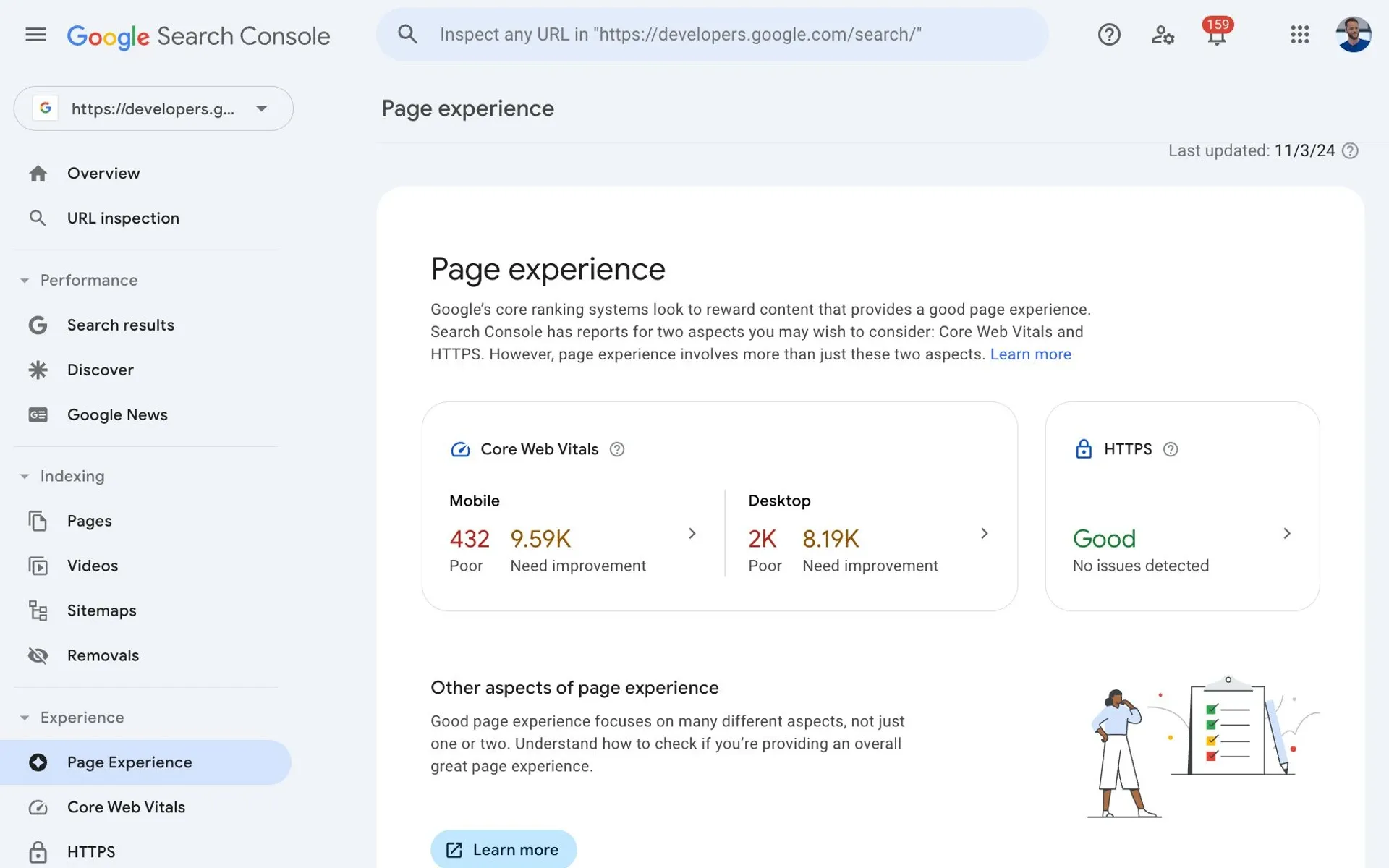Google removes Page Experience Report from Search Console
Core Web Vitals and HTTPS metrics remain accessible as Google streamlines Search Console navigation and data presentation.

Today, November 18, 2024, Google is removing the Page Experience report from Google Search Console. According to the announcement made on LinkedIn this morning, this strategic change aims to streamline the user interface and reduce unnecessary complexity within the tool.
The Page Experience report, which previously consolidated data from Core Web Vitals and HTTPS metrics, will no longer be available as a standalone feature. However, according to Search Engine Land's Barry Schwartz, the individual Core Web Vitals and HTTPS reports will continue to be accessible through their respective sections.
This modification was first indicated in April 2023, marking a planned transition in Google's approach to presenting website performance data. The implementation comes as part of Google's ongoing efforts to refine their tools and metrics presentation.
"We decided to remove this page to reduce unnecessary clutter within Search Console and simplify navigating to this information," Google stated in their official announcement on LinkedIn, adding that they "still encourage you to focus on providing a good page experience to your readers and monitoring the status of your sites page experience in the CWV and HTTPS reports."
Core Web Vitals Framework
The Core Web Vitals report, which remains available, measures three critical aspects of user experience: - Largest Contentful Paint (LCP): According to the documentation, this metric measures the time to render the largest content element visible in the viewport, with a threshold of 2.5 seconds for "good" performance - Interaction to Next Paint (INP): This evaluates page responsiveness with a 200ms threshold for optimal performance - Cumulative Layout Shift (CLS): This tracks visual stability with a target score of 0.1 or less
HTTPS Security Implementation
The HTTPS report continues to provide essential security metrics: - SSL certificate validation - Protocol implementation verification - Security status monitoring across all indexed URLs
Data Integration Changes
The technical implications include: - Separation of previously combined metrics - Individual access to specific performance indicators - Streamlined data presentation for clarity
Historical Context
The Page Experience report has been an integral part of Google Search Console since its launch in April 2021. During its implementation period, it served as a consolidated dashboard for webmasters and SEO professionals to monitor their websites' performance metrics.
According to the provided documentation, the report underwent several iterations:
- Initial launch in April 2021
- Major update in November 2023
- Final removal in November 2024
The evolution of this tool reflects Google's responsive approach to user feedback and changing technical requirements. The initial implementation aimed to provide a comprehensive view of website performance, while the current change focuses on simplifying access to critical metrics.
Industry Impact
The removal of the Page Experience report represents a significant shift in Google's approach to data presentation and website analysis. This change aligns with broader industry trends toward simplified, more focused tools for web performance monitoring.
The strategic importance of this update is evident in several areas:
- Streamlined data access for webmasters
- Enhanced focus on core metrics
- Simplified navigation within Search Console
- Reduced complexity in performance monitoring
According to Google's documentation, this change maintains all essential functionality while improving the user experience for Search Console users.
Key Facts
- Announcement Date: November 18, 2024
- Implementation: Immediate removal of Page Experience report
- Retained Features: Core Web Vitals and HTTPS reports continue independently
- Primary Goal: Reduction of interface complexity
- User Impact: Simplified navigation and data access
- Historical Context: Tool evolved from April 2021 launch through November 2023 update
- Technical Continuity: All essential metrics remain accessible through individual reports

